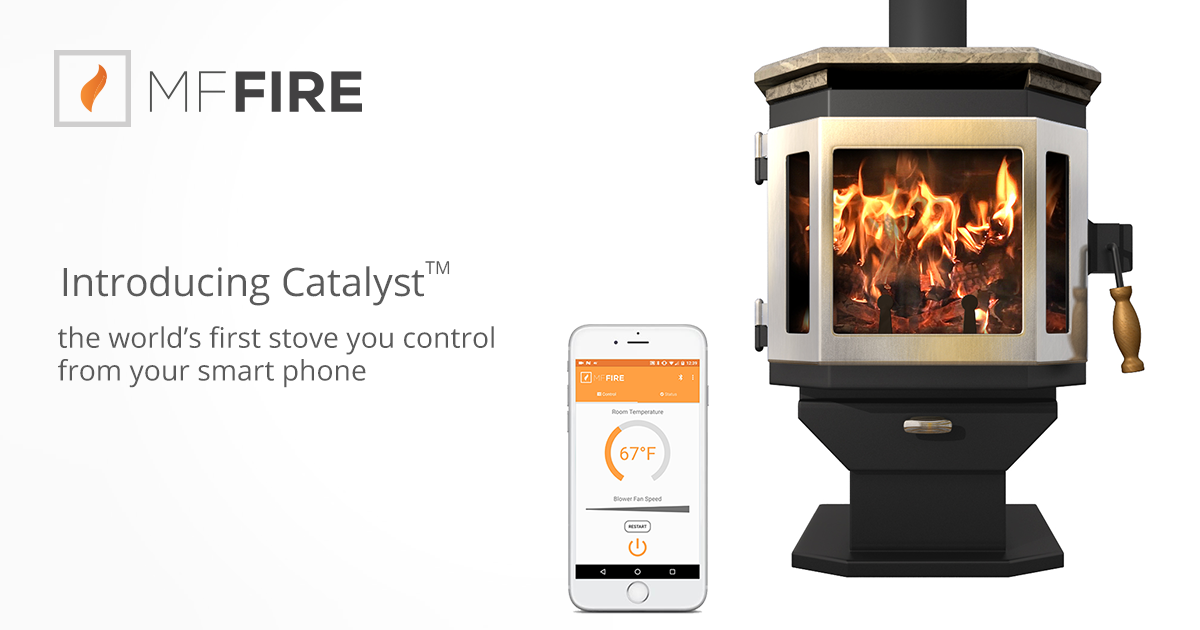This seems like a more expensive, less efficient version of a BK that requires you to set up a bunch of electronics (and then hope nothing goes wrong with any of them) - the marketing hyperbole also gets my hackles up (no one spends hours lighting their wood stove, there are other stoves with thermostatic controls, calling something that doesn't even qualify for the federal tax credit the 'most efficient' stove on the market is quite the stretch). If they're going to stretch the truth really obviously in some places, I don't really have the time or inclination to discover if their particular way of measuring efficiency/emissions is actually better than the EPA test protocol, or if it's just more nonsense/spin. Certainly their EPA numbers are pretty lackluster, their clearance requirements are middle of the road, and a hearth pad requirement of R 2.67 is unusually high (why are they blasting all that heat out the bottom of the stove?).
It's also a pretty chonky stove - at 600 lbs, that's starting to get into a weight where there are likely structural reinforcement components of the installation. Compared to the BK Princess, I'm not sure what they're doing - the Princess has a 50% larger firebox, also has a thermostat, but it still has a slightly smaller footprint and height, and is only about 2/3 the weight.
ETA: Ok, I did poke around at some of their claims in more detail:
Serious side-eye about their 'it works great without electricity!' claim. From the manual: "Just build a fire as you normally would and allow it to burn. Catalyst has no manual controls, so no adjustment is possible." No air control at all? That seems like something that might technically work, but probably not a great idea to actually do.
Also the 'start a fire in 3 minutes' claim is pretty sus: "The catalytic combustor burns the gases and particles in the exhaust
when the temperature of the smoke reaches approximately 500ºF going through the catalytic combustor, or typically after about 5-15
minutes of establishing a strong fire." If I have to sit and monitor temps for 5 - 15 minutes before taking a manual action, I would call that taking 5 - 15 minutes to start up the stove, ie the same amount of time it takes to start up my existing stove.
The cat maintenance and removal procedures don't look especially simple, so if this is marketed towards people who want a super easy stove, that could be a problem.
The 'smart' efficiency percentage number is from the Nest white paper - the percentage savings are dramatically higher in warmer climates (such as the Bay Area), and drop off once you get to places where it gets cold in the winter (basically, if your delta-T to outside is 20 at a comfortable temp and 0 for an away-from-home temp, you'll get way bigger percentage - though not dollar - savings than someone where the two delta-Ts are 70 and 50). Unfortunately since wood stoves tend not to be as popular in Mediterranean climates, the odds that they can actually reduce wood usage by 20% are slim to none (for someone who's away from home for 10 hours a day, 7 days a week, with no pets to be worried about, with a schedule that's ok with a cold house all morning until you leave, you might get a 10% savings by dropping the indoor temp 20 degrees while you're out of the house). For most people, I would guess it's a 5% or less savings.

 mffire.com
mffire.com


